Scaling Innovation Canvas

Introduction
If you are working at an NGO and you are in the front line of developing new innovations, you might know that often a new innovation is only successful to the level of a pilot. And in some cases, the innovation reaches a bigger scale as part of the donor-funded program that is promised to reach many beneficiaries. But once the program’s funding runs out, then what? Is your innovation fit for further scaling? What are the drivers for scaling? What would you need to put in place to successfully scale your innovation?
Innovation directors of Plan International, GIZ, PACT, Oxfam Novib, and IRC have discussed this challenge. This led to the joint development of The Scaling Innovation Canvas; a practical canvas that can trigger innovation and program teams at NGOs to think about how to be more successful at scaling innovations.
In this article, we introduce the canvas and invite people to download and use the tool. Let us know what you think of it, and how we can further improve it.
Why would we develop “The Scaling Innovation Canvas”?
Proportion is a global human-centered design agency. We exist to innovate for social impact on behalf of low-income communities in developing and upcoming countries. Besides supporting social ventures with design services, we often work with NGOs, who see the value of adopting a human-centered design approach. Our work starts with scoping the problem in a community which the NGO aims to tackle.
We team up with our clients to conduct qualitative design research in these target communities, articulating the design challenge, which is followed by co-creating human-centered solutions, then we prototype and pilot them. Often our role ends there, and the NGO brings the innovation further to scale. Thinking about scalability during this early stage seems inappropriate.
But we think it will create a big difference if you think forward during the design stage, rather than at the end of a program. Regular debates about your scaling strategy enable your team to design and validate that strategy through multiple cycles, getting everything in place in time.
Co-creating the canvas with innovation directors
Proportion initiated the Innovators Team, a platform on which innovation directors of international NGOs come together on a monthly basis to discuss their challenges in transforming their NGOs to become more innovative.
One of the challenges that were recently submitted was about how to effectively scale innovations. We have conducted interviews with the innovation directors and innovation managers of Plan International, PACT, IRC, GIZ, and Oxfam Novib.
We also like to refer to a very useful publication of the Mulago Foundation. All the insights and public resources led to the design of the canvas that triggers you to articulate your innovation, sketch a future, and define what you need to put in place in order to realize that future.
During a group workshop, five innovation leads simultaneously practiced with the canvas for five innovations that were brought to scale. When reflecting on this experience, the innovation directors expressed that the canvas triggered many relevant topics to think about, which would be a useful exercise for their internal team(s). Based on their suggestions for improvement, we revised the canvas, which we will share below. We warmly welcome you to test it out on a case and provide your constructive criticism.
The Scaling Innovation Canvas
The canvas consists of three sections:
- Innovation blueprint
- Future sketch
- Key resources to scale
The purpose of the canvas is to guide innovation teams within development organizations to reflect on nine building blocks that would need to be in place in order to bring innovations to scale. The canvas can be seen as a worksheet that the team can revise multiple times during the innovation process. You can download the PDF or access the Mural worksheet.

View the high resolution of the canvas in Mural via this link.
Section 1: Innovation blueprint
The Innovation Blueprint section is where the actual innovation is articulated. This starts with defining the key personas you are aiming to impact. We have used elements of the empathy map and the value proposition canvas of Peter J. Thomson, including fears, needs, wants, and substitutes. You can include multiple personas through color-coded stickies.

Minimum Viable Product
The minimal viable product is expected to be broken down into the key benefits, the user experience journey, and the key features. Questions to answer here are:
- What are the key benefits your MVP offers? How does the target group benefit from your MVP?
- User experience journey: What are the steps your user undertakes from becoming aware of your innovation to the whole user experience?
- Key features: What are the products/services that drive the behavior change of the user?
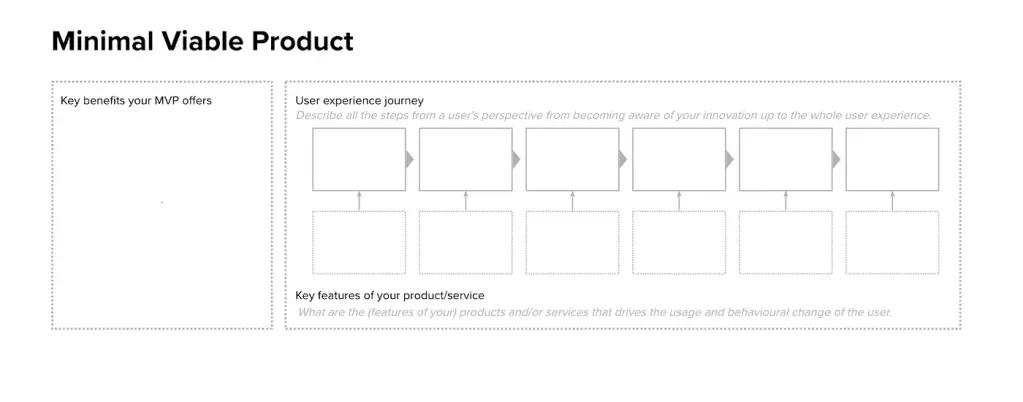
Finally, before scaling your innovation, you need to be really critical about it’s potential to be effective and impactful, by thoroughly assessing its user desirability, the technical feasibility to deliver the MVP, and the financial viability (potential). Ideally, this is done through randomized control trials. No impact? Then the innovation is not qualified to be scaled, even if there is scale-up funding available.
Section 2: Future sketch
The Future sketch pillar is where you articulate your mission, big idea, and a key impact indicator. This starts with formulating a one-sentence impact-driven mission statement. You basically answer the “WHY?” question.

Then you articulate your answer to the HOW question. This again comes down to a one-sentence description of your big idea that explains how you are going to do that (rather than what you are going to do).
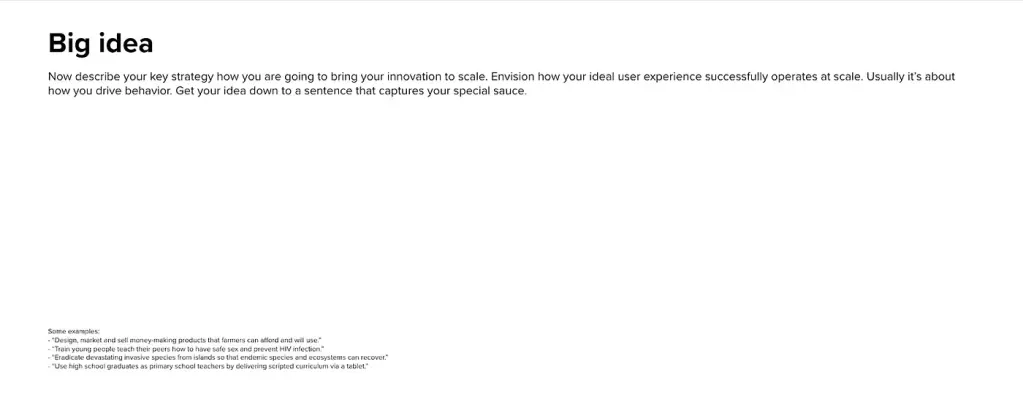
Most development projects have a lot of impact and outcome indicators. But in order to scale, you need to have focus, focus, focus! Therefore you are challenged to pick only one key impact indicator.
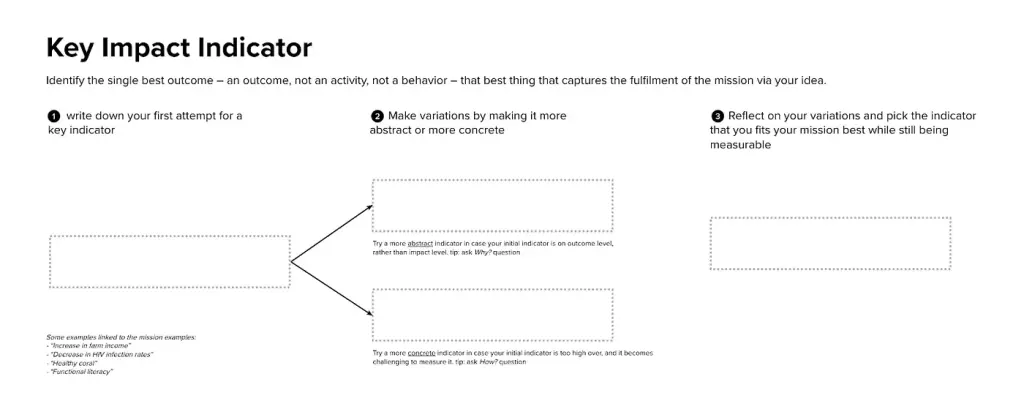
Section 3: Key resources to scale
The key resources to scale pillar is where you articulate the strategy for the key resources you need for effective scaling. The most important ones are the human resources, starting with champions at the senior management level, your internal team, and the scale partners. A model will only scale if it is designed with the doer in mind.

Next is articulating your intellectual resource. What is the form of the concept, who is the emotional and technical owner of the concept, and what are the legal conditions of enabling others to be your scale partner?

Then finally, your financial resources. Who are your payers? Do you have an impact-for-money estimator in place? And do you have key influencers within your network for access to your desired payers?
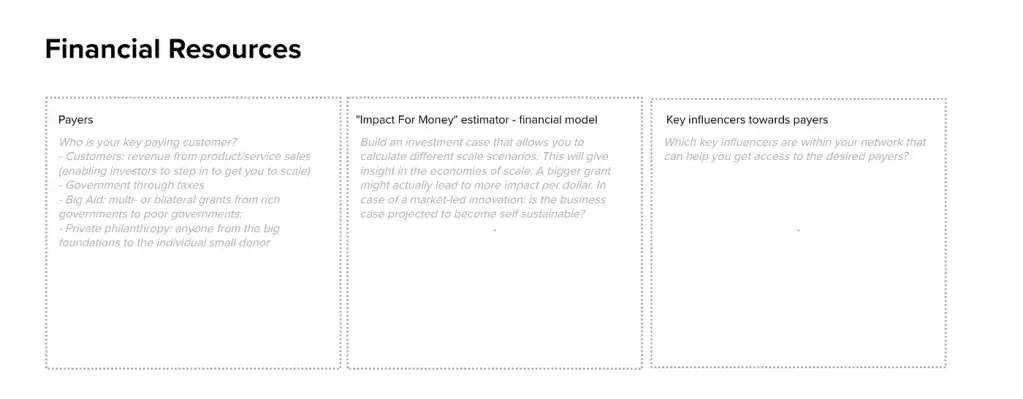
Vertical and horizontal logic within the canvas
Vertical logic
Each pillar has a vertical coherence. It is recommended to fill in each pillar from top to bottom.
- Three building blocks around Innovation blueprint
- Three building blocks around Future sketch
- Three building blocks around Key resources to scale
Horizontal logic
Row 1: key persona — Mission — Human resources
This is all about the people that you aim to impact and who you include to deliver the impact.
Row 2: MVP — Big idea — Intellectual Resources
This is all about the core of your innovation. What is it? How does it operate at scale? And how do you manage the ownership of it?
Row 3: Proof of concept — Key Impact Indicator — Financial resources
This is about the evidence of your impact, how you measure it, and how you convert this into an impact for money offering.

Use of this canvas: reflect with your team on a regular basis
Team effort
This canvas is meant to be completed as a team by the people who are involved in the development and scaling of innovation within your organization. The team can be considered as the extended team that includes everyone who is internally involved throughout the innovation process, including innovation experts, problem owners, concept owners, business developers, field researchers, implementing partners, and senior management. But the team can obviously include also external stakeholders, like a social entrepreneur.
Regular exercise
The extended team can use the canvas at various stages: ideation stage, validation stage, pilot stage, pre-scale stage and scale stage. The earlier the better, since it challenges the team to think forward about how the innovation would operate at scale and what is needed for that.
Backlog
Beneath each pillar, there is a self-reflection poll. As a team, you determine your level of completeness and confidence. If you have scored a 5, you can celebrate that success. If you score less than a 5, then there is still some work to be done
You can articulate your outstanding issues in the following boxes:
- Weaknesses/key risks
- Ideas for improvement/risk mitigation
- Backlog (activities still to be done)

Open to constructive criticism!
We have only just begun the co-creation and use of this canvas. We warmly welcome you to download and use the tool if you are active in scaling innovations in the development sector. Constructive criticism will only make it more valuable!
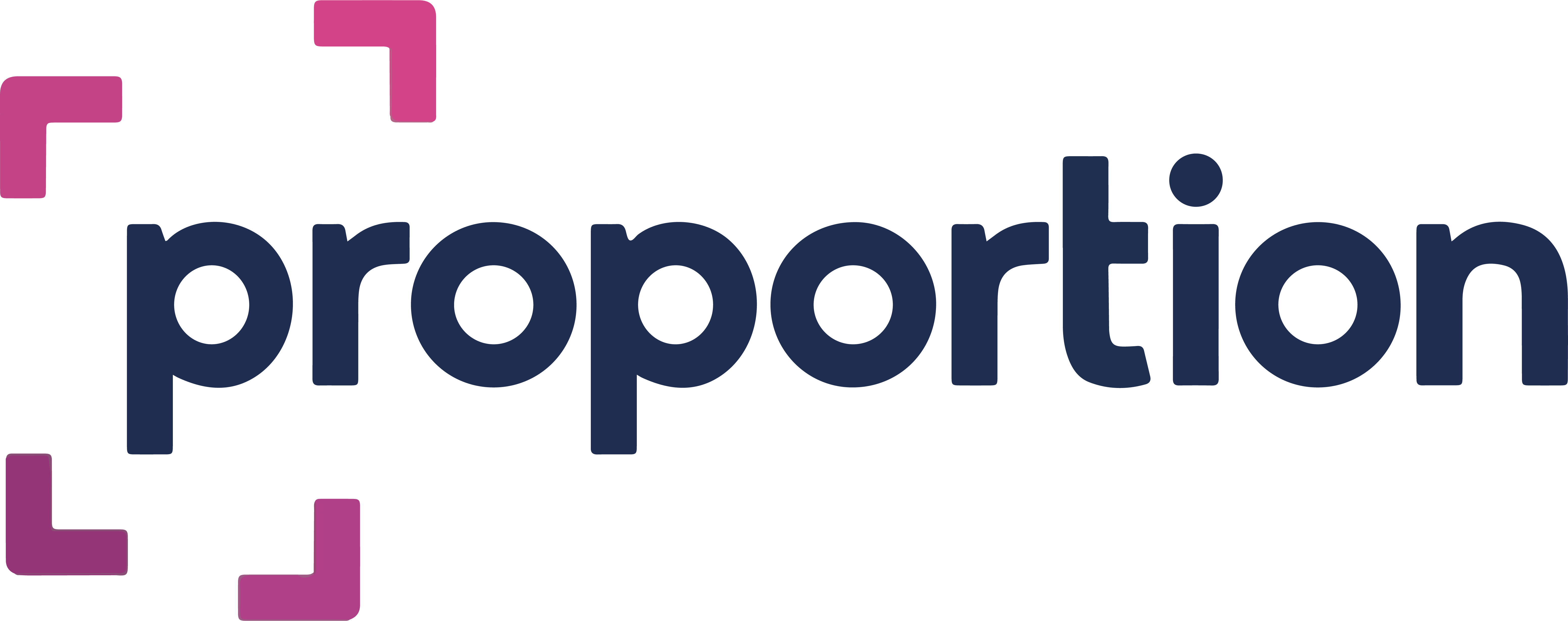

Responses